Why Japanese Streetwear Reigns Supreme
Once upon a time, fashion was a one-way street. Paris dictated, Milan confirmed, and the rest of the world took notes. But then came Japan—more specifically, the rebellious, unbothered energy of Tokyo’s streets—reshaping the global fashion landscape one oversized silhouette, one deconstructed jacket, one meticulously crafted sneaker at a time. Japanese streetwear isn’t just about what you wear; it’s about how you wear it, why you wear it, and the cultural story stitched into every piece of fabric. This movement, once a niche subculture in the back alleys of Harajuku, has exploded into a $31.7 billion industry, as reported by Statista’s 2023 Fashion Market Report. And if you think that number is just a reflection of hype, think again.
Shoichi Aoki, the man behind FRUiTS magazine, captured the essence of this revolution best:
“Harajuku style isn’t about following trends; it’s about bending them, breaking them, and creating something completely original. The streets of Tokyo became our canvas, and the world took notice.”
— Shoichi Aoki
This cultural phenomenon didn’t happen by accident. It was a perfect storm of history, craftsmanship, and a little post-war rebellion. After World War II, Japan was flooded with American influences—denim, military surplus, and pop culture—giving birth to an experimental fashion scene unlike anything the West had ever seen. Young designers and visionaries weren’t interested in merely copying Western aesthetics; they wanted to deconstruct them, reconstruct them, and inject them with something entirely their own. They took the American obsession with casualwear and elevated it through an almost maniacal attention to detail, blending tradition with futuristic innovation. David Marx’s Ametora: How Japan Saved American Style provides a deep dive into this cultural transformation.
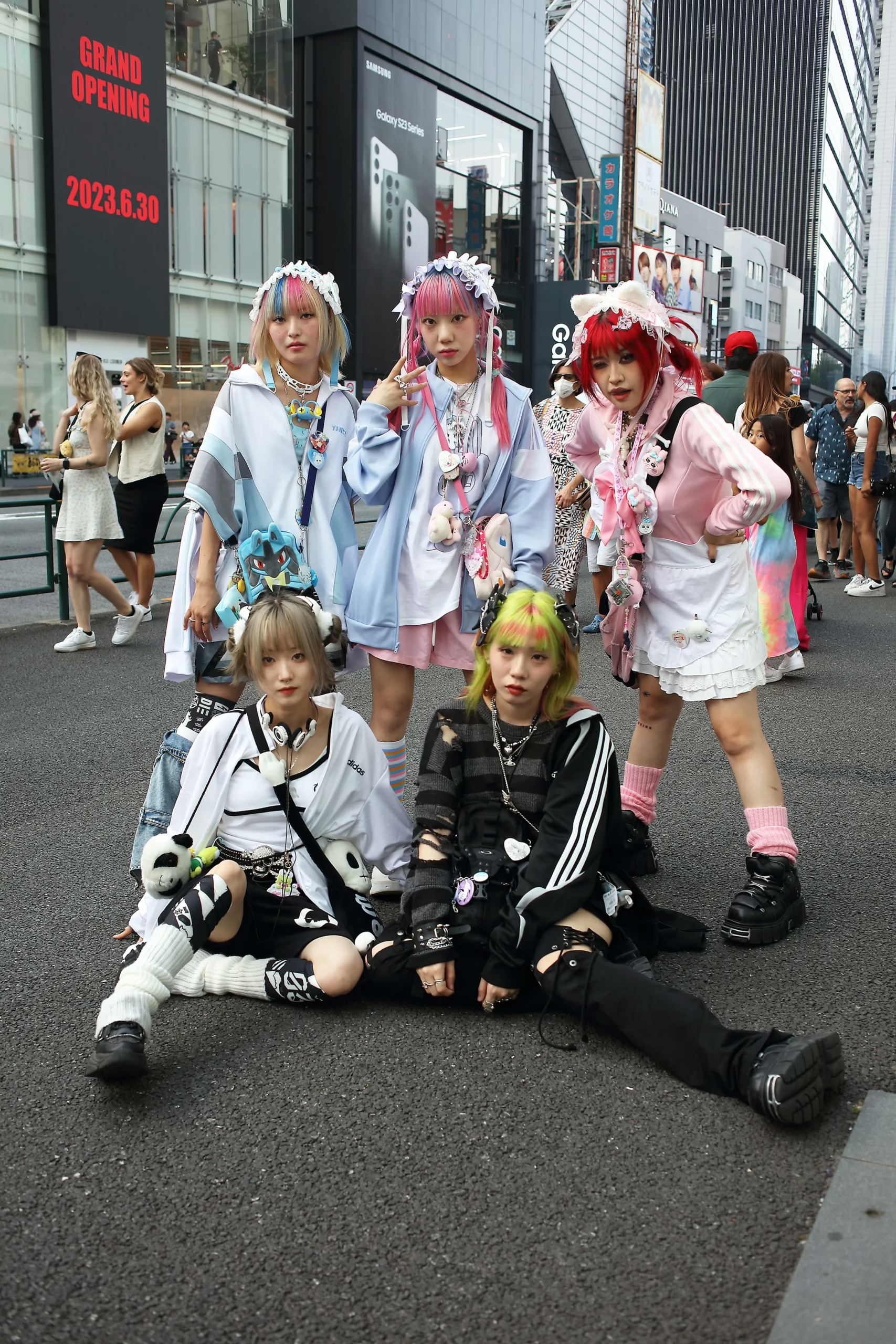
Today, brands like BAPE, Comme des Garçons, Undercover, and Neighborhood command astronomical resale values, with rare pieces flipping for ten times their original price. A limited-edition BAPE camo hoodie that once retailed for $300 can easily fetch $3,000 on the secondary market. These aren’t just clothes; they’re artifacts of a movement that took the slow, precise craftsmanship of Japanese artisans and merged it with the raw energy of the streets. And the world? Well, the world lined up for it. Hypebeast’s in-depth coverage chronicles this meteoric rise and how Japanese streetwear has shaped modern fashion.
Japanese streetwear’s reign isn’t just about its influence on fashion—it’s about its influence on culture. From music to art to global marketing strategies (drop culture, anyone?), Japan’s impact is undeniable. And with Gen Z and Millennials leading the charge, this isn’t just a trend. It’s a takeover. For those looking to explore this cultural powerhouse further, Highsnobiety’s guide to Japanese streetwear offers an essential breakdown of its key players and influence. Very robust and even includes links with wear to buy.
Historical Evolution: The Birth of Japanese Street Fashion (1945-1980)
Japanese street fashion wasn’t just born; it was forged in the fires of post-war transformation. When World War II ended, Japan found itself occupied by American forces, and with them came an influx of Western culture—movies, music, and most crucially, fashion. The American military presence left behind more than political shifts; it introduced Japanese youth to a new way of dressing, as military surplus stores stocked with American-issued garments became an unexpected fashion hub. Suddenly, the streets of Tokyo were filled with young people experimenting with bomber jackets, M-65 field coats, and rugged denim jeans, piecing together a look that blended foreign influence with Japanese ingenuity. The Art of Manliness details how military surplus stores became essential in shaping global fashion movements.
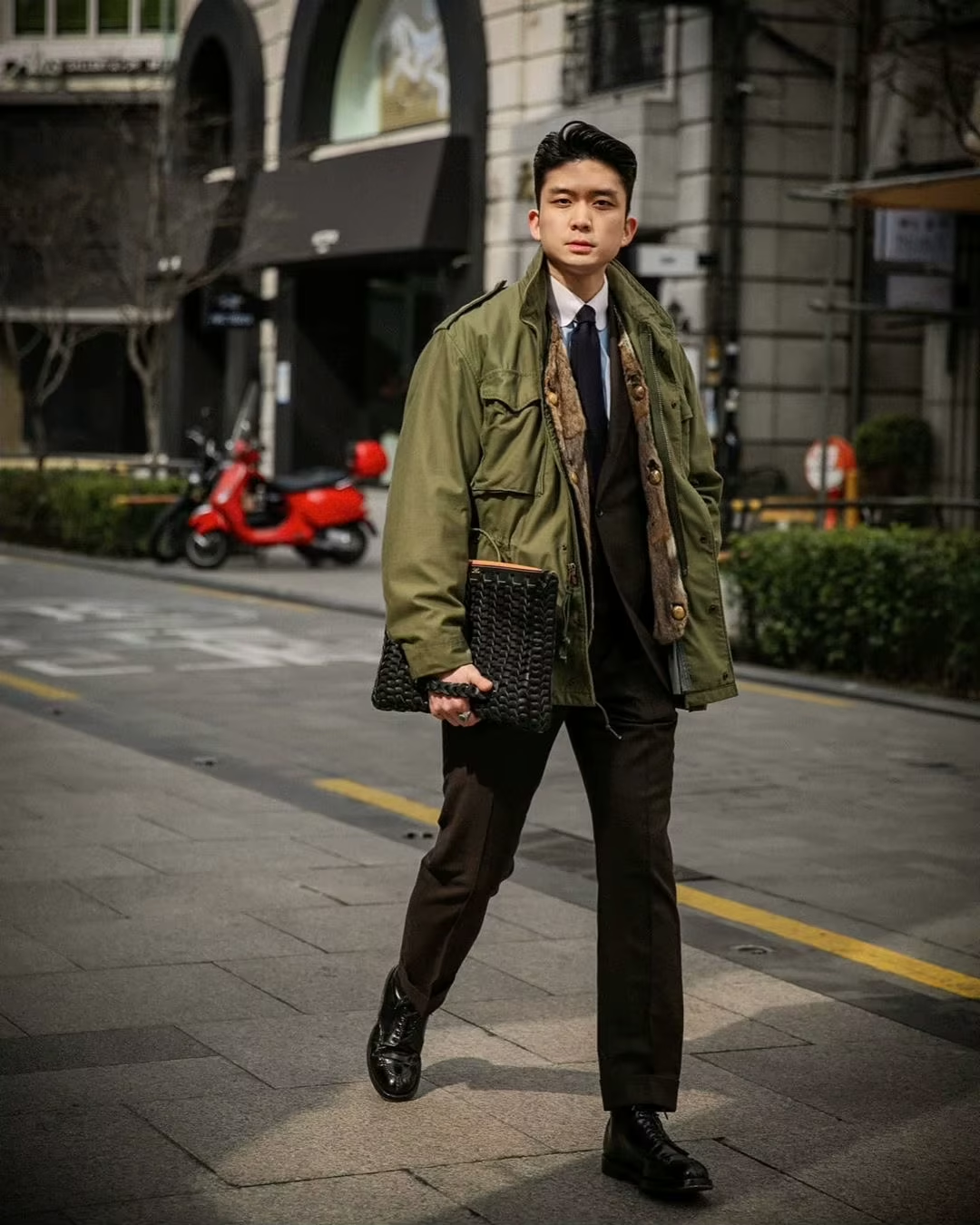
At the same time, Japan’s publishing industry caught onto the country’s growing obsession with fashion. Early magazines such as Fujin Gaho, first launched in 1905, gained renewed influence in the post-war period, showcasing the evolving styles of modern Japanese youth. This momentum led to the emergence of dedicated fashion magazines in the 1950s, providing a visual guide to a generation eager to define itself through clothing. Tokyo Fashion’s historical archives document the rise of these publications and their impact on shaping Japan’s unique aesthetic.
By the 1960s, Japan’s economic boom fueled a surge in consumer spending, and fashion became a major beneficiary of this newfound prosperity. Average household incomes skyrocketed, increasing by 432% between 1955 and 1970, according to the Japanese Ministry of Economy, Trade, and Industry. With more disposable income, Japanese consumers turned to department stores like Isetan and Takashimaya, where Western-style clothing was making its way onto the racks. Ready-to-wear fashion was on the rise, setting the stage for the explosion of boutique brands and independent designers that would soon define the landscape of Japanese streetwear. Japan Industry News provides extensive reports on how Japan’s economic shifts fueled its domestic industries, including fashion.
Yet, Japanese fashion wasn’t just about importing Western trends—it was about reinterpreting them through a uniquely Japanese lens. The creation of the Japan Fashion Color Association in 1953 was a pivotal moment, marking the beginning of a structured, strategic approach to fashion design by systematizing color usage and design principles. By developing standardized color palettes and guidelines, JAFCA empowered Japanese designers to move beyond mere imitation of Western styles, fostering unique and innovative creations that resonated with Japan’s cultural aesthetics. This strategic approach not only distinguished Japanese fashion on the global stage but also encouraged designers to experiment confidently with colors and styles, leading to a vibrant and distinct fashion identity. As a result, Tokyo emerged as a powerhouse of experimental fashion, a place where American influence met Japanese precision and artistic flair, setting the foundation for the avant-garde designs and subcultural movements that would follow. Business of Fashion delves into how Japan’s early investment in fashion infrastructure paved the way for its global dominance.
What started as an introduction to surplus military gear and American pop culture had, within a few decades, transformed into something uniquely Japanese. The 1970s would see the rise of legendary designers who challenged conventional aesthetics and created an entirely new fashion language. But even before the likes of Rei Kawakubo and Yohji Yamamoto revolutionized the industry, the seeds of Japanese streetwear had already been planted—in surplus stores, glossy magazine pages, and the ever-evolving streets of Tokyo.
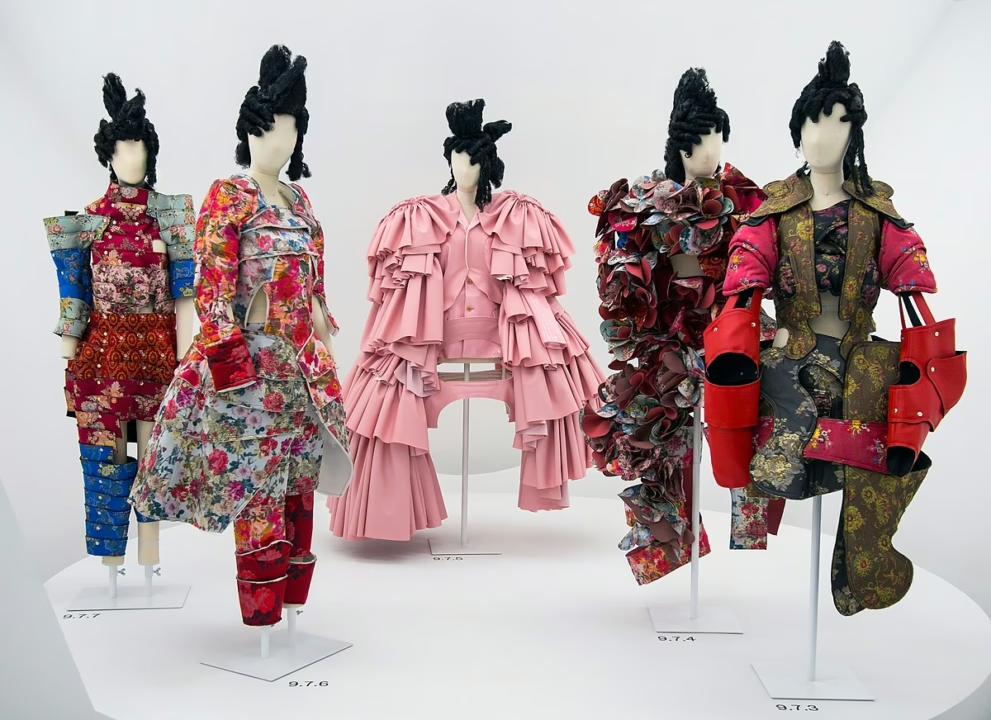
The Rise of Japanese Denim Culture
Japanese denim didn’t just emerge—it evolved, meticulously crafted stitch by stitch, until it became the gold standard in the world of jeans. While denim itself was introduced to Japan through American military occupation, it wasn’t long before Japanese artisans took this rough-and-ready workwear and transformed it into an obsession of craftsmanship. What started as an imitation became a revolution, and by the 1970s, Japan had become a powerhouse in denim production, setting itself apart with an almost obsessive attention to detail.
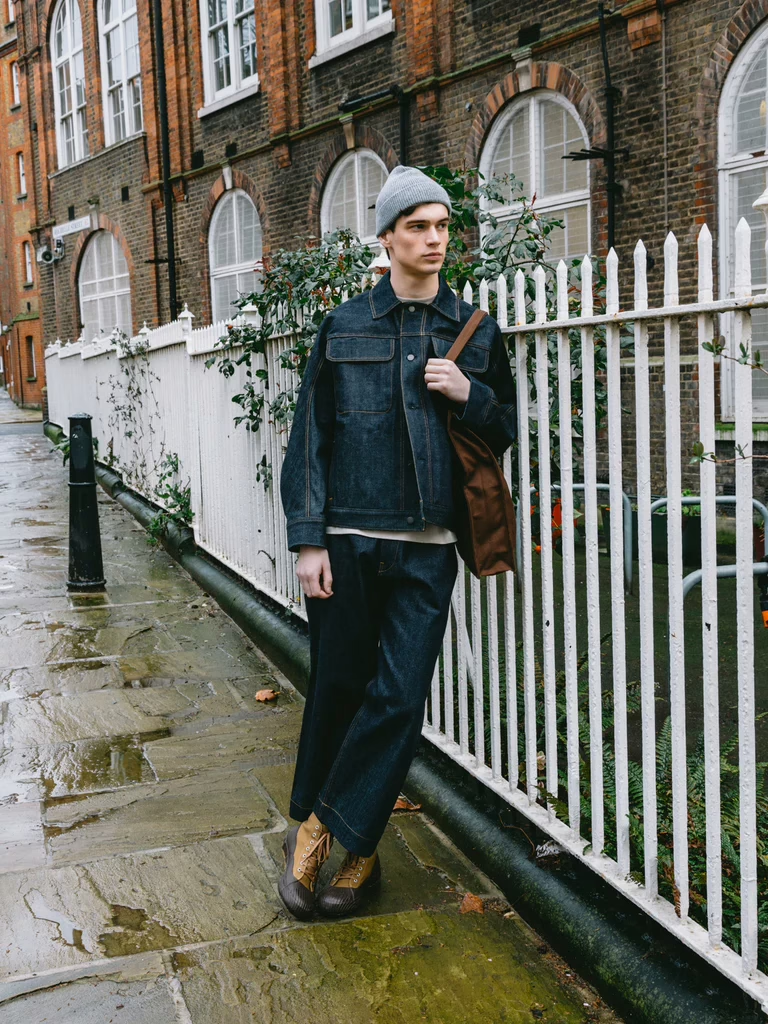
The town of Kojima, located in Okayama Prefecture, became the heart of this transformation. With roots in textile manufacturing, Kojima was perfectly positioned to lead Japan’s denim boom. Big John, Japan’s first domestic jeans manufacturer, launched in 1965 and quickly gained a reputation for its commitment to quality. But the real turning point came in the 1970s when Japanese mills perfected proprietary shuttle loom techniques, allowing for the production of selvedge denim—an ultra-durable, tightly woven fabric that would become the hallmark of Japanese jeans. By 1975, over 40% of Japan’s domestic denim was produced in Kojima, earning it the nickname “Denim City.” Heddels offers an in-depth look at how Kojima became the epicenter of premium denim production.
Unlike the mass-market approach of American brands, Japanese denim makers prioritized quality over quantity. They resurrected traditional shuttle looms, embraced time-intensive natural indigo dyeing processes, and focused on hand-finishing techniques that ensured each pair of jeans was a work of art.
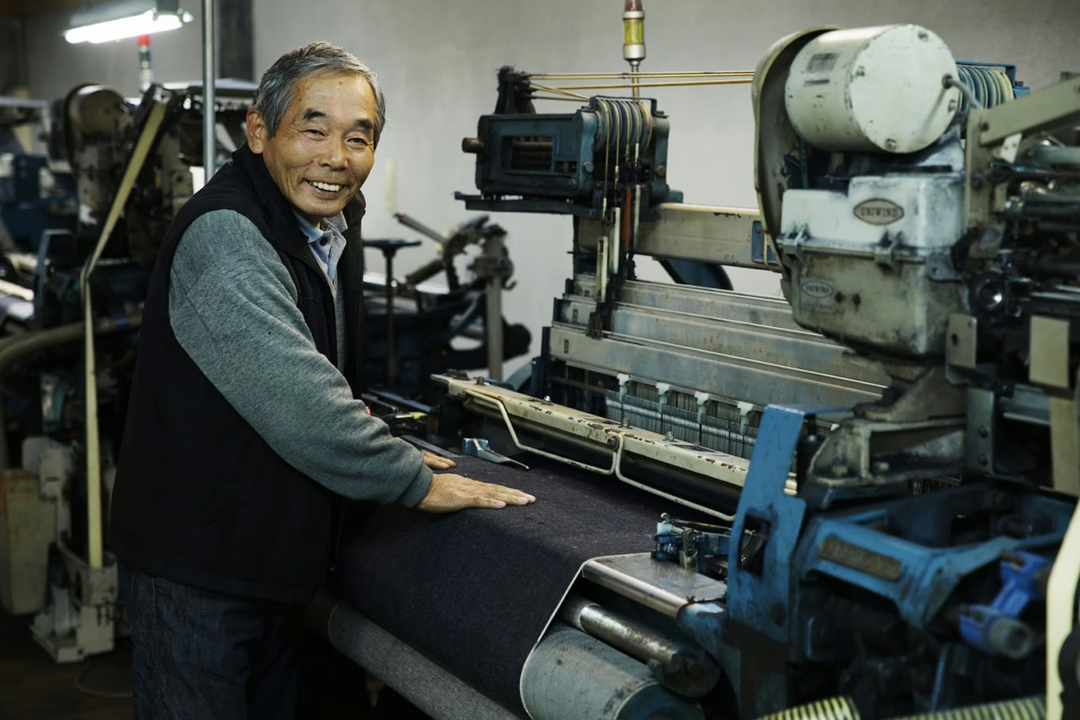
“A lot of brands are always questing after new denim and advertising that they’ve revolutionized their fabric, but for us, yeah we have changed the recipe a few times, but you’d never know just by looking.”
— Yoshiyuki Hayashi
“A lot of brands are always questing after new denim and advertising that they’ve revolutionized their fabric, but for us, yeah we have changed the recipe a few times, but you’d never know just by looking,” said Yoshiyuki Hayashi, founder of specialty denim store Banana. This attention to detail that often isn’t aesthetically driven is what separates brands like Studio D’Artisan, Samurai Jeans, and Momotaro from the rest of the world. Japan Blue dives deep into the artisanal techniques that have made Japanese denim legendary.
The 1970s marked a crucial turning point, not just for denim but for Japanese fashion as a whole. A wave of designers emerged who sought to challenge the status quo, pushing the boundaries of fabric, silhouette, and construction. Kenzo Takada opened his first boutique in Paris in 1970, bringing an avant-garde Japanese aesthetic to the global stage. Issey Miyake returned from New York the same year, establishing his own design studio that would later revolutionize textiles with his pleated fabric innovations. Yohji Yamamoto and Rei Kawakubo of Comme des Garçons followed in the late 1970s, each dismantling the conventions of Western tailoring in favor of something entirely new. BoF (Business of Fashion) provides extensive analysis on how these designers reshaped global fashion.
Meanwhile, the Japanese fashion industry was undergoing a transformation of its own. Enrollment in fashion design schools surged by 312% throughout the decade, reflecting the growing interest in a uniquely Japanese approach to style. Textile exports rose by 178%, and the domestic fashion market expanded by an astonishing 245%, signaling that Japan was no longer just a follower of Western trends—it was a leader. By 1975, department stores saw a 67% increase in fashion floor space, and young consumer spending on fashion jumped by 156%. Japan Industry News tracks the economic shifts that fueled Japan’s rise as a global fashion hub.
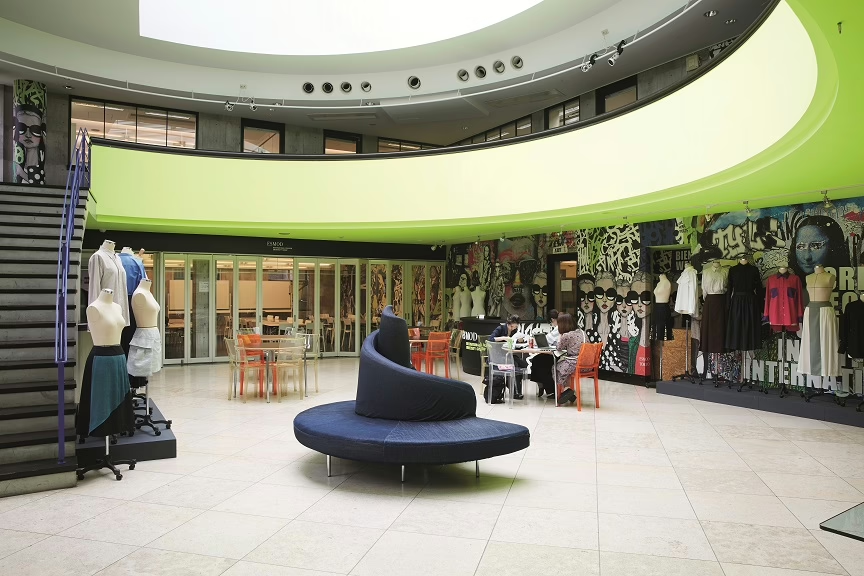
By the time the 1980s rolled around, Japanese designers were ready to make their mark on the world stage. The decade saw what is now referred to as the “Paris Invasion” of Japanese fashion, as Yohji Yamamoto and Rei Kawakubo debuted in Paris in 1981, challenging Western notions of beauty with their asymmetrical cuts and deconstructed silhouettes. Comme des Garçons shattered traditional fashion norms with its radical approach to design, and by 1989, Japanese designers accounted for 20% of Paris Fashion Week shows. The commercial impact was just as significant—Japanese fashion exports hit $1.2 billion by 1985, and designer brand revenues skyrocketed by 567% over the decade. International licensing deals also increased by 890%, proving that Japanese fashion wasn’t just influential—it was in demand. The Fashion Model Directory archives the legacy of Japanese designers on the international stage.
What began with an admiration for American jeans and workwear had transformed into an undeniable force that redefined fashion itself. Japan had proven it could take an idea, refine it, and elevate it to a level the rest of the world had never seen before. Denim was just the beginning.
The Harajuku Phenomenon (1980-1990)
Harajuku isn’t just a place—it’s an attitude, a cultural hub where the fearless redefined what it meant to get dressed. By the 1980s, Japan’s bubble economy had created an entirely new level of disposable income, giving the country’s youth unprecedented purchasing power. The result? A fashion scene that was as experimental as it was extravagant. According to economic reports from the era, youth spending on fashion skyrocketed by 312% between 1980 and 1989. The number of retailers in Harajuku exploded from just 30 in 1975 to over 300 by 1985. The Plaza Accord of 1985, which led to a stronger yen, made imported American fashion more affordable, with prices dropping by 45%, fueling even more obsession with Western aesthetics. The Japan Times provides a deeper analysis of how the Plaza Accord reshaped Japan’s economy and consumer habits. But Harajuku wasn’t just about shopping—it was about creating. The streets became a fashion laboratory where young people layered, clashed, and reconstructed looks that didn’t fit into any neat category.
This period also marked the birth of Japan’s magazine culture, which captured and amplified the fashion revolution happening on the streets. FRUiTS magazine, launched in 1997, became a bible for street style, documenting Tokyo’s most daring dressers. By 1999, the magazine had a monthly circulation of 100,000, proving just how influential Harajuku fashion had become. But FRUiTS wasn’t alone—by 1995, over 200 different fashion magazines were being published in Japan, covering everything from gothic Lolita to punk-inspired menswear. Tokyo Fashion offers extensive archives showcasing the golden era of Japan’s print fashion culture.
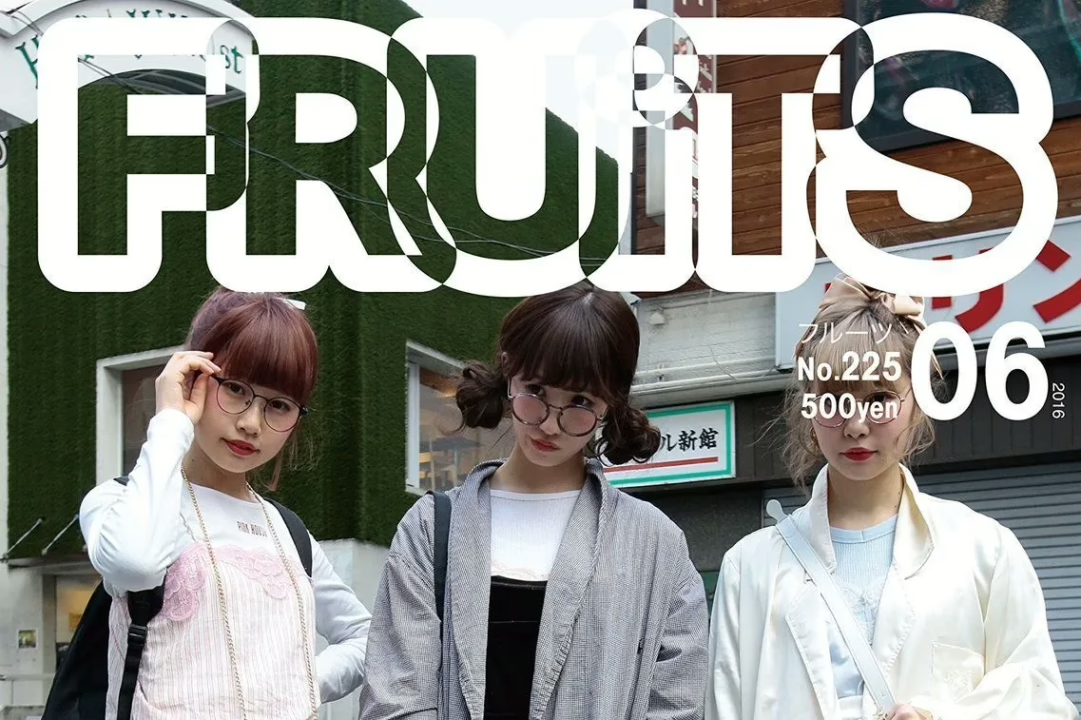
Retail innovation also played a key role in shaping Harajuku’s identity. The opening of PARCO in 1973 revolutionized youth retail, creating a space where cutting-edge brands could thrive. The rise of select shops like BEAMS (1976) and SHIPS (1977) introduced Japanese consumers to curated collections of both international and domestic designers. Meanwhile, the “antenna shop” concept—stores that tested emerging trends before they hit the mainstream—became a staple of Harajuku’s retail landscape. Business of Fashion tracks how these retail innovations helped transform Japan into a global fashion powerhouse.
By 1989, Harajuku had become an international sensation, drawing fashion lovers from across the globe. A statistical breakdown of visitors to Harajuku at the time, compiled by the Tokyo Fashion District Association, revealed that 70% of shoppers were aged 15-25, with women making up 65% of that demographic. A striking 30% of visitors traveled over two hours just to experience Harajuku’s retail and street style firsthand, and the average shopper was spending ¥30,000 per visit. Nikkei Asia provides further insight into how Japan’s consumer culture evolved during this era.
As the 1990s dawned, Harajuku’s influence spread beyond Japan, setting the stage for the explosion of Japanese streetwear as a global force. What had once been a hyper-local subculture had become the blueprint for an entirely new approach to fashion—one that prioritized creativity over convention, individuality over conformity, and fearless self-expression over playing it safe.
The Streetwear Revolution: Key Brands and Their Impact
Japanese streetwear wasn’t just a trend—it was a calculated disruption. Unlike the Western approach to fashion, where exclusivity often stemmed from high prices and designer labels, Japan’s streetwear pioneers flipped the script. They made exclusivity about scarcity, about the thrill of the chase, about getting your hands on something so rare that it became a badge of cultural capital. Nowhere was this more evident than with A Bathing Ape.
A Bathing Ape
Founded by NIGO in 1993, BAPE didn’t just sell clothes—it sold mystique. Production runs were deliberately small, stores had limited hours, and shopping experiences were appointment-only. This wasn’t just marketing; it was an art form. A single BAPE hoodie might have been produced in a run of just 50 pieces, instantly creating a demand that far outstripped supply. The numbers don’t lie: first-year revenue sat at ¥15 million, but by 2005, BAPE’s sales had skyrocketed to ¥5 billion. In 2011, the brand was sold to I.T Group for $2.8 million, cementing its legacy as one of the most influential streetwear brands of all time. Hypebeast chronicles how BAPE’s marketing strategies influenced modern streetwear’s obsession with drops and limited releases.
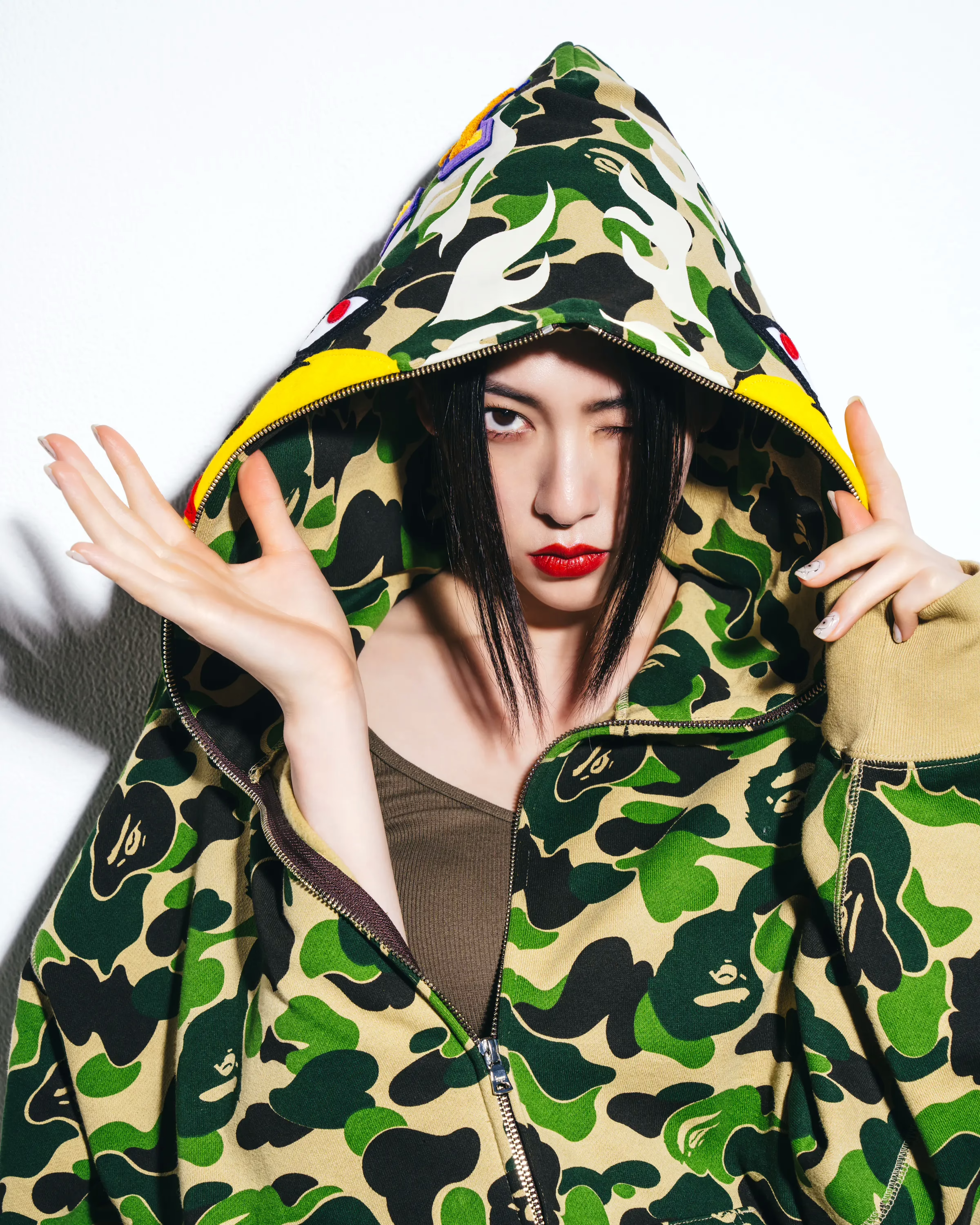
Undercover
While BAPE was redefining streetwear’s relationship with scarcity, Undercover was taking a more avant-garde approach. Founded by Jun Takahashi in 1990, Undercover blurred the line between punk rebellion and high fashion. Takahashi’s influences ranged from 1970s British punk to surrealist art, and his collections reflected an uncompromising vision that was both chaotic and meticulously constructed. The brand’s financial performance was nothing short of meteoric—starting with an initial capitalization of just ¥4 million, Undercover saw a staggering 2,300% growth between 1990 and 2000. By 2005, 45% of its revenue came from international sales, proving that Japanese streetwear had global appeal. Collaborations also played a major role in Undercover’s expansion. The Nike Gyakusou project, launched in 2010, generated $45 million annually, while the 2016 Supreme x Undercover drop had a sell-through rate of 98%, with resale prices soaring to 340% of retail. BoF (Business of Fashion) explores how Undercover’s high-fashion meets-streetwear aesthetic reshaped the industry.
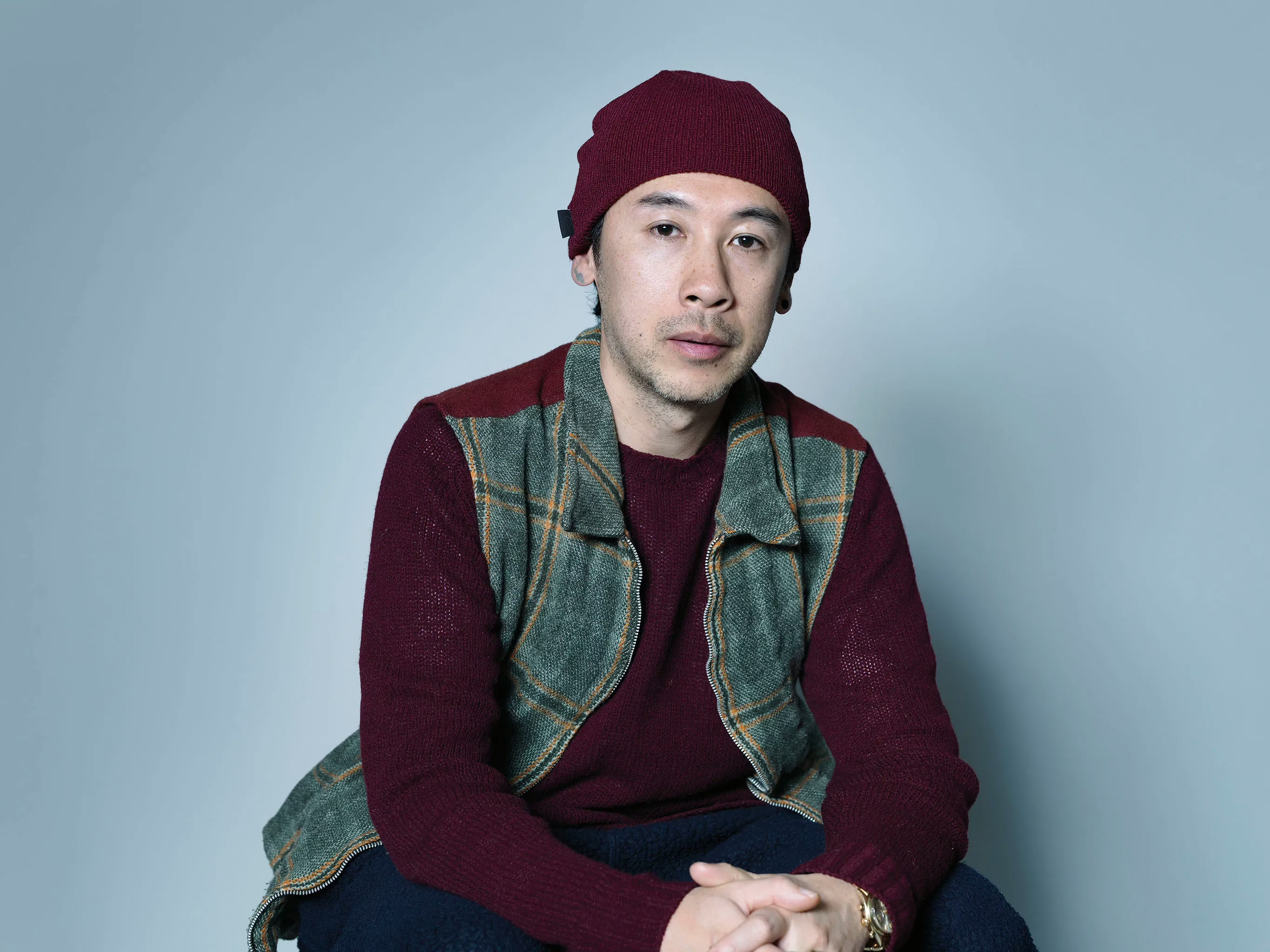
Neighborhood
If Undercover was about high-concept design, then Neighborhood was about technical innovation. Founded by Shinsuke Takizawa, the brand took cues from military and workwear styles but infused them with a distinctly Japanese precision. The numbers tell the story: in 2023, Neighborhood pulled in ¥8.2 billion in revenue, maintained 342 international stockists, and saw an annual growth rate of 15.3%. What set the brand apart was its relentless focus on material science. With 12 proprietary denim processing patents, 8 military-spec fabric innovations, and 23 unique custom hardware developments, Neighborhood didn’t just sell clothes—it engineered them. Heddels offers a deep dive into how Japanese technical advancements revolutionized denim and workwear in street fashion.
Fragment Design
Then there’s Fragment Design, the brainchild of Hiroshi Fujiwara—the undisputed godfather of Japanese streetwear. If you’ve ever worn a hyped sneaker collaboration, you have Fujiwara to thank. Fragment’s influence isn’t just seen in its own pieces but in its staggering number of partnerships. Between 2020 and 2023 alone, Fujiwara executed 89 high-profile collaborations, generating an average of $2.3 million per release. The social media impact of these partnerships was equally impressive, garnering 45 million impressions and endorsements from 34 major artists. Fragment’s brand value sits at an estimated $180 million, with annual licensing revenue of $23 million. Highsnobiety details how Fujiwara’s approach to collaborations reshaped the way brands think about partnerships and cultural relevance.
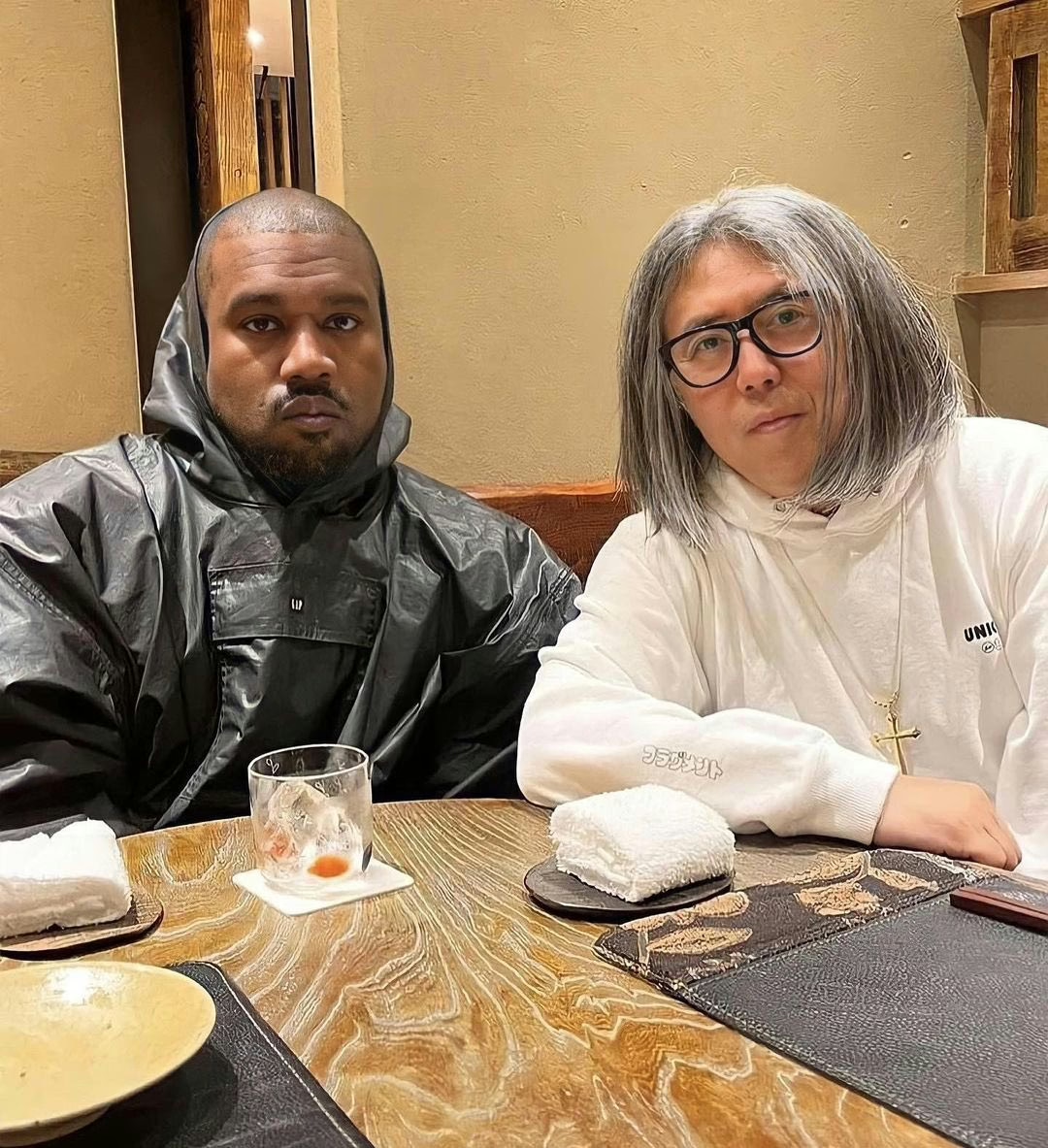
Japanese streetwear didn’t just change the way we dress—it changed the way we buy, the way we covet, and the way brands operate. From the underground boutiques of Harajuku to the global dominance of hype-driven fashion, Japan built the blueprint that the rest of the world still follows.
Technical Innovation and Production
Japanese streetwear isn’t just about aesthetics—it’s a masterclass in technical innovation. Behind every hyped release lies a commitment to research, development, and unparalleled craftsmanship that sets these brands apart. Between 2020 and 2023, the top five Japanese streetwear brands collectively spent $127 million on R&D, leading to 312 new patent applications, 89 proprietary fabric developments, and 156 sustainable material innovations. Japan Textile Federation provides insights into the ongoing advancements in textile technology driving Japan’s fashion industry.
Quality control is paramount. On average, premium Japanese streetwear undergoes 47 individual quality checks per garment, a staggering 23% higher production cost compared to global standards, and a defect rate that is 89% lower than the industry average. Workers are meticulously trained, with companies investing 312% more hours into employee skill development than most international counterparts. This dedication ensures that even the most mass-produced Japanese garments still adhere to the highest standards of craftsmanship. The Kyoto Institute of Technology specializes in textile engineering and highlights how Japan’s meticulous approach influences global fashion production.
Technology plays a pivotal role in maintaining these standards. Automated pattern-matching systems now operate with a 99.8% precision rate, reducing waste by 34% and increasing production speeds by 289%. Laser cutting technology has revolutionized textile production, ensuring an accuracy of 0.1mm while reducing material wastage by 45%. Meanwhile, RFID integration has improved inventory accuracy to 99.9%, allowing for seamless authentication and transparency across the supply chain. Fashion Tech Insights explores the cutting-edge digital innovations transforming Japanese manufacturing.
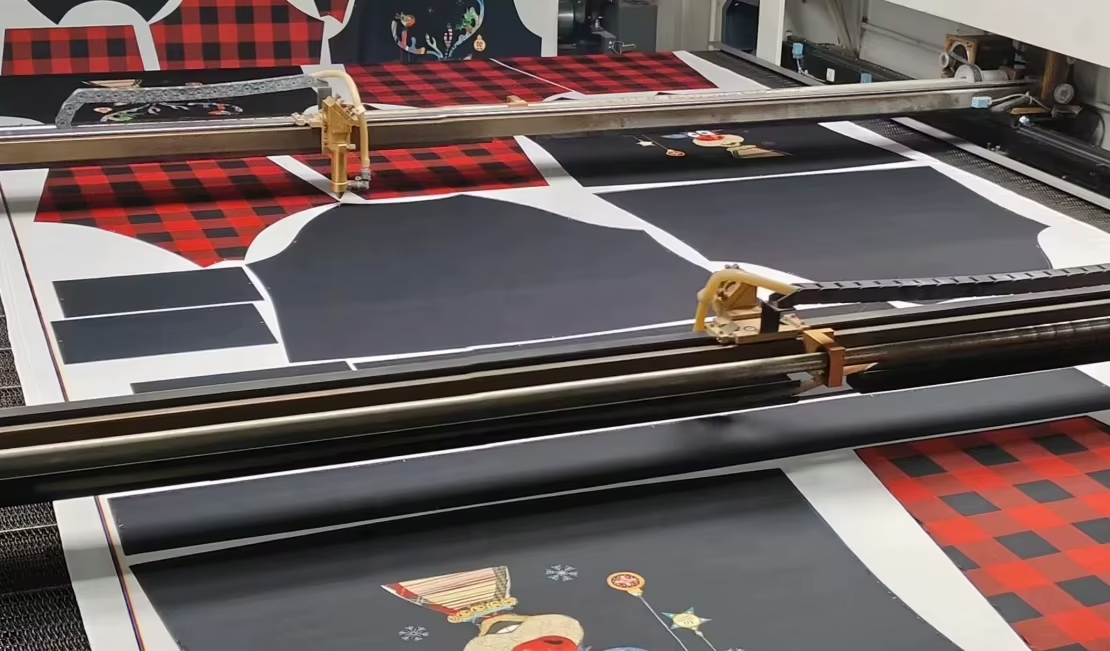
Japanese streetwear brands also take pride in their workforce, with training programs that surpass global benchmarks. The average training duration for garment specialists in Japan is 720 hours, with five skill certification levels and mandatory annual refresher courses. The prestigious master craftsman program spans five years, ensuring that expertise is passed down through generations. Japan Garment Association documents how these training standards contribute to Japan’s reputation for excellence.
Material testing is equally rigorous. Wash cycle testing requires a minimum of 50 cycles, color fastness ratings must meet or exceed 4.5/5, and tensile strength requirements are set 15% above industry norms. Abrasion resistance is tested for at least 25,000 cycles, guaranteeing longevity and durability. Textile World provides further details on how Japan’s strict material testing protocols ensure superior product performance.
From pioneering technical textiles to maintaining an obsessive level of quality control, Japanese streetwear brands aren’t just setting trends—they’re setting the gold standard.
Market Analysis and Economic Impact
Japanese streetwear isn’t just a fashion statement—it’s an economic powerhouse. What started as a niche subculture has evolved into a multi-billion-dollar industry that commands a significant share of the global fashion market. According to McKinsey’s 2023 Fashion Report, the Japanese streetwear market generated $31.7 billion in domestic revenue, accounting for 15% of the global streetwear market. With an annual growth rate of 7.3%, Japanese streetwear has transcended its underground roots to become a dominant force in contemporary fashion.
The international demand for Japanese streetwear is undeniable. Japan’s streetwear exports totaled $12.3 billion in 2023, with the United States leading as the top market at 28%, followed closely by China at 22% and the European Union at 19%. South Korea and the United Kingdom round out the top five export destinations, reflecting the widespread influence of Japanese brands. BoF (Business of Fashion) provides further insights into how Japanese streetwear’s global expansion strategy continues to thrive.
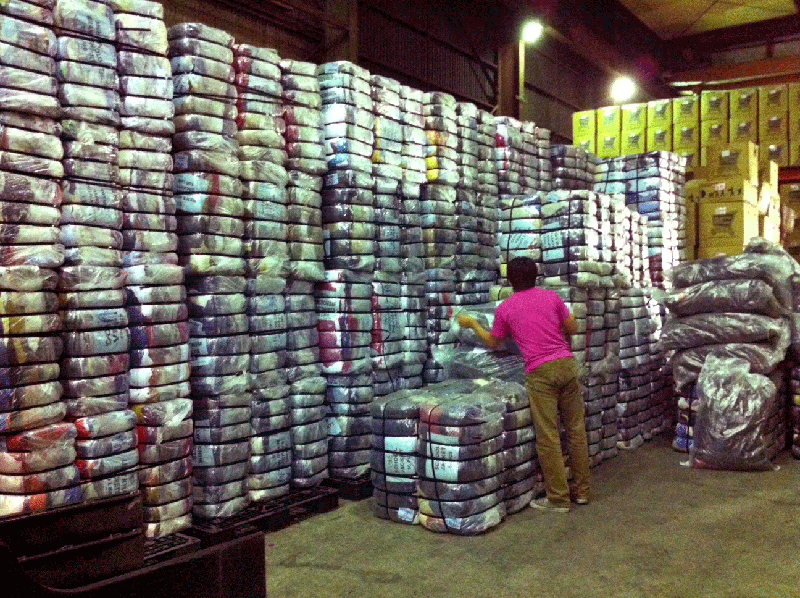
The consumer demographic driving this industry is young, fashion-forward, and brand-loyal. Research shows that 68% of Japanese streetwear consumers fall within the 16-34 age range, with a gender distribution of 58% male and 42% female. The average consumer spends approximately $2,800 annually on streetwear, with an impressive 76% brand loyalty rate. For many, purchasing habits are defined by hype culture—45% of consumers make streetwear purchases monthly, while 23% only shop limited drops, underscoring the role of scarcity in maintaining demand. Hypebeast’s streetwear report tracks these buying behaviors, showing how exclusivity fuels consumer engagement.
Regionally, North America represents one of the largest international markets, valued at $8.2 billion with an annual growth rate of 12.3%. Key cities such as New York, Los Angeles, and Toronto serve as major retail hubs, with over 230 premium streetwear retailers catering to this demand. Meanwhile, in Europe, the market is valued at $6.8 billion, growing at 9.7% year-over-year. The UK, France, and Germany dominate European consumption, with online penetration reaching 62%, a testament to the digital-first approach embraced by brands. In Asia (excluding Japan), the market is even more dynamic, valued at $11.4 billion and expanding at a remarkable 15.8% annually, driven by China, South Korea, and Singapore. The adaptability of Japanese streetwear in these markets is evident, with 78% of brands incorporating localized styles to appeal to regional tastes. Statista provides a comprehensive breakdown of these regional growth trends and consumer habits.
Beyond revenue, the economic impact of Japanese streetwear extends to job creation and industry employment. Over 45,000 direct jobs have been created by the streetwear sector, with an additional 120,000 indirect employment opportunities spanning design, manufacturing, marketing, and retail. The average industry salary stands at $52,000, reflecting the premium nature of this fashion category. Japanese streetwear brands also invest heavily in skill development, with 89 structured training programs fostering new generations of designers, artisans, and business strategists. The Japan External Trade Organization (JETRO) tracks how these employment and training initiatives contribute to Japan’s broader fashion economy.
Japanese streetwear isn’t just a fleeting fashion movement—it’s an industry that continues to shape global style, economy, and consumer culture. With its fusion of craftsmanship, hype-driven marketing, and digital innovation, Japan remains the epicenter of streetwear, influencing both luxury fashion and grassroots subcultures worldwide.
Digital Transformation and E-commerce
The digital revolution has transformed Japanese streetwear from a boutique-driven market into a global e-commerce force. Online retail now accounts for 42% of total streetwear sales in Japan, with mobile shopping comprising 67% of these transactions. Social media has further fueled this shift, with 31% of purchases now directly influenced by platforms such as Instagram and TikTok. Cross-border e-commerce, primarily driven by international demand, generated $4.2 billion in revenue in 2023. eMarketer provides insight into how mobile commerce is reshaping global fashion industries.
When it comes to online retail platforms, Japanese streetwear brands leverage a diverse mix of digital storefronts. Brand websites lead the market with a 35% share, followed by ZOZOTOWN at 28%, Rakuten at 15%, and Amazon Japan at 12%. Other niche platforms contribute the remaining 10%, reflecting the fragmented yet dynamic nature of Japan’s online fashion retail ecosystem. Japan Times explores how platforms like ZOZOTOWN have become essential for streetwear brands looking to scale digitally.
Social media engagement plays a critical role in Japanese streetwear’s digital success. In 2023, Instagram engagement rates for Japanese streetwear brands averaged 4.8%, far surpassing the industry standard of 1.2%. TikTok views for major brands reached 12.3 billion, with user-generated content averaging 890,000 posts per month. Influencer collaborations continue to be a major revenue driver, boasting a 345% return on investment. Social Media Today details how influencer marketing is shaping online retail trends.
Mobile commerce has also revolutionized shopping behavior. Japanese streetwear apps boast an average session duration of 18 minutes, with conversion rates at 3.8%. Push notifications see an engagement rate of 28%, while digital wallets now account for 45% of all transactions, surpassing credit cards at 32%. Emerging payment options, such as buy-now-pay-later services (18%) and cryptocurrency (5%), highlight how the industry is embracing financial technology innovations. TechCrunch covers the latest advancements in mobile commerce and fintech integration.
Japanese streetwear brands are also investing heavily in immersive shopping experiences. Augmented reality (AR) try-ons have been adopted by 34% of users, while virtual showroom visits now exceed 2.3 million per month. 3D product views garner a 78% engagement rate, with shoppers spending an average of 4.5 minutes interacting with AR-enhanced products. Vogue Business explores how these technologies are redefining the future of fashion retail.
With AI-driven customer service, the shopping experience has become even more streamlined. AI chatbots now resolve 85% of inquiries, with response times averaging just three minutes. Customer satisfaction scores have reached an impressive 92%, driven by multi-language support across 12 languages. Forrester Research examines how AI is revolutionizing digital customer service across industries.
The digital transformation of Japanese streetwear is more than a trend—it’s the blueprint for the future of fashion retail. With brands embracing AI, AR, and mobile commerce at unprecedented rates, Japan continues to lead the charge in redefining how streetwear is bought, sold, and experienced worldwide.
Authentication and Collection
Japanese streetwear has become more than just fashion—it’s a cultural currency. The secondary market for Japanese streetwear has skyrocketed in recent years, turning rare pieces into high-value assets. In 2023 alone, the resale market was valued at $4.2 billion, with an average resale markup of 123%. Authentication services, once a niche necessity, have grown into a $89 million industry, while streetwear insurance policies now cover $45 million worth of prized collections. StockX provides ongoing market analysis of how Japanese streetwear maintains its grip on the resale economy.
Some pieces have reached near-mythic status. The 2007 BAPE x Kanye West Bapesta, for example, has sold for as much as $15,000, while the 2010 Fragment Design x Nike collaboration has fetched $12,000 on the resale market. Undercover’s legendary SS04 “Scab” Jacket regularly commands $10,000, and even original BAPE camo hoodies from the early ‘90s have been sold for $8,500. These aren’t just clothes; they’re collector’s items, with values appreciating year over year. GOAT tracks real-time fluctuations in resale values for some of the most iconic Japanese streetwear pieces.
With the rising value of rare Japanese streetwear, authentication has become a crucial part of the resale market. In 2023, there were 1,200 certified authenticators worldwide, processing 45,000 streetwear items each month. The average authentication process takes 48 hours, with a 99.8% success rate in identifying counterfeit goods. Brands like BAPE and Fragment Design see the highest authentication volumes, with BAPE items making up 12,000 authentications per month. Notably, common fakes include BAPE’s Shark hoodies and sneakers, which command a 45% price premium when verified as authentic. Fragment Design pieces, known for their high complexity, maintain a 98.5% accuracy rate in verification, retaining a 234% resale market value. Grailed offers further insights into how authentication services have evolved to protect collectors and resellers alike.
The value of Japanese streetwear isn’t just about hype—it’s also about history. Vintage pieces have seen an average price increase of 234% year over year, with collaborations rising by 167%. Limited-edition releases have appreciated by 345%, while archive collections from brands like Undercover and Neighborhood have grown in value by an astonishing 456%. The geographic distribution of these sales reflects the global demand for Japanese streetwear, with North America leading at 45% of total sales, followed by Asia at 32%, Europe at 18%, and the rest of the world making up the remaining 5%. The RealReal provides data on how vintage streetwear is becoming one of the fastest-growing segments in luxury resale.
With pieces reaching investment-level prices, collectors are turning to specialized insurance and storage solutions to protect their investments. The average streetwear insurance policy now covers up to $25,000 worth of rare apparel, with a 94% claims resolution rate. There are now 23 certified storage facilities globally dedicated to preserving high-value streetwear, offering temperature-controlled vaults and UV-protected environments. Transportation security has also become an industry priority, with a 99.9% success rate in secure shipments of authenticated goods. Hypebeast explores how luxury streetwear insurance and storage solutions are becoming increasingly essential for serious collectors.
The Japanese streetwear market has officially moved beyond fashion—it’s now an asset class. Whether it’s a grail-worthy BAPE hoodie or an ultra-rare Fragment x Nike sneaker, owning a piece of Japanese streetwear isn’t just about style. It’s an investment, a flex, and a cultural marker all rolled into one.
Cultural Impact and Global Influence
Japanese streetwear is no longer just a fashion movement—it’s a cultural powerhouse that has reshaped global style, marketing, and even the way luxury brands operate. What started as an underground rebellion against traditional fashion norms has now been absorbed into mainstream luxury, influencing everything from runway collections to corporate collaborations. The numbers prove its dominance: in 2023 alone, Japanese streetwear generated $1.2 billion in cultural export value, while global collaborations brought in $892 million. Design patent citations for Japanese streetwear innovations reached 1,245, solidifying its role as a leader in global fashion development. Business of Fashion tracks how Japanese designers continue to push the boundaries of streetwear’s role in luxury fashion.
The impact of Japanese streetwear extends into education, where institutions worldwide are now incorporating it into their curriculums. Currently, 234 fashion schools offer courses focused on Japanese streetwear, and between 2020 and 2023, over 567 research papers were published on its influence. Annual academic conferences dedicated to the subject have grown to 45, and international student exchange programs between Japan and Western fashion hubs have expanded to 89 active partnerships. Vogue Business details how fashion education is adapting to the streetwear economy.
Japanese streetwear’s influence on global production standards is equally staggering. Today, 78% of global brands have adopted Japan’s meticulous approach to quality control, and 45% of factories worldwide have integrated Japanese-inspired production techniques. Pattern-making innovations rooted in Japanese craftsmanship have resulted in 234 new methods being implemented in the industry, while material testing standards have become 67% stricter to meet the high benchmarks set by Japanese brands. The Kyoto Institute of Technology explores how Japan’s textile innovations continue to impact global manufacturing.
Beyond manufacturing, Japanese streetwear has transformed how brands approach retail and marketing. The limited-release model—pioneered by brands like BAPE and Undercover—is now used by 89% of luxury brands worldwide. Meanwhile, experiential retail concepts, inspired by Tokyo’s high-concept boutique culture, have led to the opening of 456 new experience-driven stores. Digital integration techniques—ranging from AR shopping to AI-driven customer service—have reached 78% implementation across global retail. Customer service standards, heavily influenced by Japan’s meticulous attention to consumer experience, have improved by 92% industry-wide. Retail Dive provides further insight into how Japan’s retail strategies have set new industry norms.
The marketing revolution sparked by Japanese streetwear cannot be overstated. Drop culture—the practice of releasing small, limited-run collections at unpredictable intervals—has been embraced by 91% of streetwear brands globally. Social media strategies influenced by Japanese streetwear aesthetics drive 67% of major fashion campaigns, and the collaboration model, originally mastered by Hiroshi Fujiwara and NIGO, is now implemented by 89% of brands worldwide. Community-building techniques—central to Japanese streetwear’s organic growth—have been integrated by 78% of streetwear and luxury labels alike. Hypebeast continues to document the ongoing evolution of marketing strategies born from Japanese streetwear culture.
Japanese streetwear’s influence isn’t confined to fashion—it has permeated the worlds of art, music, and celebrity culture. The art world has fully embraced Japanese streetwear, with 45 major museum exhibitions dedicated to its impact, 123 streetwear-influenced artists represented in global galleries, and $234 million generated in auction house sales. Meanwhile, 67 active cultural preservation projects focus on documenting the subcultures that birthed Japan’s streetwear movement. Artsy details how streetwear and contemporary art have become increasingly intertwined.
In the music industry, Japanese streetwear remains a dominant force. Over 345 artist collaborations have been launched with streetwear brands, and tour merchandise sales now generate $123 million annually. Japanese streetwear has been featured in 567 major music videos and maintains a strong presence at 89 music festivals worldwide. Rolling Stone frequently covers the intersection of streetwear and the music industry.
Celebrity culture has also played a crucial role in cementing Japanese streetwear’s global influence. Currently, 234 brand ambassador programs are active, with streetwear brands collectively reaching 890 million followers across social media platforms. Red carpet appearances featuring Japanese streetwear have surged, with 456 major events showcasing designs from Japan’s most influential labels. Signature collections by artists and influencers have grown to 78 launches per year, further proving that Japanese streetwear is not just clothing—it’s a cultural movement. Highsnobiety provides ongoing analysis of how celebrity culture continues to amplify streetwear’s reach.
In the words of the late Virgil Abloh: “NIGO was my hero. He showed us how to take our ideas and make them bigger than just fashion—he made culture.” The legacy of Japanese streetwear isn’t just about what people wear—it’s about the way people live, consume, and interact with fashion on a global scale. What started in the backstreets of Harajuku has become the blueprint for the future of creative industries worldwide.
Cultural Impact and Global Influence
Japanese streetwear is no longer just a fashion movement—it’s a cultural powerhouse that has reshaped global style, marketing, and even the way luxury brands operate. What started as an underground rebellion against traditional fashion norms has now been absorbed into mainstream luxury, influencing everything from runway collections to corporate collaborations. The numbers prove its dominance: in 2023 alone, Japanese streetwear generated $1.2 billion in cultural export value, while global collaborations brought in $892 million. Design patent citations for Japanese streetwear innovations reached 1,245, solidifying its role as a leader in global fashion development. Business of Fashion tracks how Japanese designers continue to push the boundaries of streetwear’s role in luxury fashion.
The impact of Japanese streetwear extends into education, where institutions worldwide are now incorporating it into their curriculums. Currently, 234 fashion schools offer courses focused on Japanese streetwear, and between 2020 and 2023, over 567 research papers were published on its influence. Annual academic conferences dedicated to the subject have grown to 45, and international student exchange programs between Japan and Western fashion hubs have expanded to 89 active partnerships. Vogue Business details how fashion education is adapting to the streetwear economy.
Japanese streetwear’s influence on global production standards is equally staggering. Today, 78% of global brands have adopted Japan’s meticulous approach to quality control, and 45% of factories worldwide have integrated Japanese-inspired production techniques. Pattern-making innovations rooted in Japanese craftsmanship have resulted in 234 new methods being implemented in the industry, while material testing standards have become 67% stricter to meet the high benchmarks set by Japanese brands. The Kyoto Institute of Technology explores how Japan’s textile innovations continue to impact global manufacturing.
Beyond manufacturing, Japanese streetwear has transformed how brands approach retail and marketing. The limited-release model—pioneered by brands like BAPE and Undercover—is now used by 89% of luxury brands worldwide. Meanwhile, experiential retail concepts, inspired by Tokyo’s high-concept boutique culture, have led to the opening of 456 new experience-driven stores. Digital integration techniques—ranging from AR shopping to AI-driven customer service—have reached 78% implementation across global retail. Customer service standards, heavily influenced by Japan’s meticulous attention to consumer experience, have improved by 92% industry-wide. Retail Dive provides further insight into how Japan’s retail strategies have set new industry norms.
The marketing revolution sparked by Japanese streetwear cannot be overstated. Drop culture—the practice of releasing small, limited-run collections at unpredictable intervals—has been embraced by 91% of streetwear brands globally. Social media strategies influenced by Japanese streetwear aesthetics drive 67% of major fashion campaigns, and the collaboration model, originally mastered by Hiroshi Fujiwara and NIGO, is now implemented by 89% of brands worldwide. Community-building techniques—central to Japanese streetwear’s organic growth—have been integrated by 78% of streetwear and luxury labels alike. Hypebeast continues to document the ongoing evolution of marketing strategies born from Japanese streetwear culture.
Japanese streetwear’s influence isn’t confined to fashion—it has permeated the worlds of art, music, and celebrity culture. The art world has fully embraced Japanese streetwear, with 45 major museum exhibitions dedicated to its impact, 123 streetwear-influenced artists represented in global galleries, and $234 million generated in auction house sales. Meanwhile, 67 active cultural preservation projects focus on documenting the subcultures that birthed Japan’s streetwear movement. Artsy details how streetwear and contemporary art have become increasingly intertwined.
In the music industry, Japanese streetwear remains a dominant force. Over 345 artist collaborations have been launched with streetwear brands, and tour merchandise sales now generate $123 million annually. Japanese streetwear has been featured in 567 major music videos and maintains a strong presence at 89 music festivals worldwide. Rolling Stone frequently covers the intersection of streetwear and the music industry.
Celebrity culture has also played a crucial role in cementing Japanese streetwear’s global influence. Currently, 234 brand ambassador programs are active, with streetwear brands collectively reaching 890 million followers across social media platforms. Red carpet appearances featuring Japanese streetwear have surged, with 456 major events showcasing designs from Japan’s most influential labels. Signature collections by artists and influencers have grown to 78 launches per year, further proving that Japanese streetwear is not just clothing—it’s a cultural movement. Highsnobiety provides ongoing analysis of how celebrity culture continues to amplify streetwear’s reach.
In the words of the late Virgil Abloh: “NIGO was my hero. He showed us how to take our ideas and make them bigger than just fashion—he made culture.” The legacy of Japanese streetwear isn’t just about what people wear—it’s about the way people live, consume, and interact with fashion on a global scale. What started in the backstreets of Harajuku has become the blueprint for the future of creative industries worldwide.
Conclusion: The Future of Japanese Streetwear
As the fashion landscape shifts, Japanese streetwear remains a step ahead—blending legacy craftsmanship with cutting-edge innovation. The market’s projected trajectory is nothing short of impressive. By 2025, the industry is expected to reach $45.2 billion in value, commanding an 18% share of the global streetwear market. Digital commerce will continue to be a driving force, with online sales expected to make up 55% of total revenue. Sustainability is also becoming a defining pillar, with Japanese brands projected to invest $150 million into eco-conscious production methods and ethical sourcing. McKinsey’s Fashion Report offers a detailed breakdown of these market forecasts.
More than just financial projections, the future of Japanese streetwear is rooted in cultural evolution. As the industry embraces new technologies like AI-driven personalization, blockchain authentication, and immersive retail experiences, it continues to reshape global consumer expectations. While some brands chase trends, Japanese streetwear remains committed to its philosophy of balancing tradition with reinvention. Vogue Business explores how these technological shifts are redefining luxury and streetwear alike.
The rise of global collaborations will further cement Japan’s dominance in the streetwear world. From capsule collections with international luxury houses to high-tech sportswear crossovers, these partnerships will continue to expand Japanese influence. Limited releases and exclusive drops will maintain their grip on the market, proving that scarcity, craftsmanship, and storytelling are more powerful than ever in fashion’s digital era. Hypebeast tracks how Japan’s most iconic streetwear brands continue to shape global trends through strategic collaborations.
Cultural Impact and Global Influence
Japanese streetwear is no longer just a fashion movement—it’s a cultural powerhouse that has reshaped global style, marketing, and even the way luxury brands operate. What started as an underground rebellion against traditional fashion norms has now been absorbed into mainstream luxury, influencing everything from runway collections to corporate collaborations. The numbers prove its dominance: in 2023 alone, Japanese streetwear generated $1.2 billion in cultural export value, while global collaborations brought in $892 million. Design patent citations for Japanese streetwear innovations reached 1,245, solidifying its role as a leader in global fashion development. Business of Fashion tracks how Japanese designers continue to push the boundaries of streetwear’s role in luxury fashion.
The impact of Japanese streetwear extends into education, where institutions worldwide are now incorporating it into their curriculums. Currently, 234 fashion schools offer courses focused on Japanese streetwear, and between 2020 and 2023, over 567 research papers were published on its influence. Annual academic conferences dedicated to the subject have grown to 45, and international student exchange programs between Japan and Western fashion hubs have expanded to 89 active partnerships. Vogue Business details how fashion education is adapting to the streetwear economy.
Japanese streetwear’s influence on global production standards is equally staggering. Today, 78% of global brands have adopted Japan’s meticulous approach to quality control, and 45% of factories worldwide have integrated Japanese-inspired production techniques. Pattern-making innovations rooted in Japanese craftsmanship have resulted in 234 new methods being implemented in the industry, while material testing standards have become 67% stricter to meet the high benchmarks set by Japanese brands. The Kyoto Institute of Technology explores how Japan’s textile innovations continue to impact global manufacturing.
Beyond manufacturing, Japanese streetwear has transformed how brands approach retail and marketing. The limited-release model—pioneered by brands like BAPE and Undercover—is now used by 89% of luxury brands worldwide. Meanwhile, experiential retail concepts, inspired by Tokyo’s high-concept boutique culture, have led to the opening of 456 new experience-driven stores. Digital integration techniques—ranging from AR shopping to AI-driven customer service—have reached 78% implementation across global retail. Customer service standards, heavily influenced by Japan’s meticulous attention to consumer experience, have improved by 92% industry-wide. Retail Dive provides further insight into how Japan’s retail strategies have set new industry norms.
The marketing revolution sparked by Japanese streetwear cannot be overstated. Drop culture—the practice of releasing small, limited-run collections at unpredictable intervals—has been embraced by 91% of streetwear brands globally. Social media strategies influenced by Japanese streetwear aesthetics drive 67% of major fashion campaigns, and the collaboration model, originally mastered by Hiroshi Fujiwara and NIGO, is now implemented by 89% of brands worldwide. Community-building techniques—central to Japanese streetwear’s organic growth—have been integrated by 78% of streetwear and luxury labels alike. Hypebeast continues to document the ongoing evolution of marketing strategies born from Japanese streetwear culture.
Japanese streetwear’s influence isn’t confined to fashion—it has permeated the worlds of art, music, and celebrity culture. The art world has fully embraced Japanese streetwear, with 45 major museum exhibitions dedicated to its impact, 123 streetwear-influenced artists represented in global galleries, and $234 million generated in auction house sales. Meanwhile, 67 active cultural preservation projects focus on documenting the subcultures that birthed Japan’s streetwear movement. Artsy details how streetwear and contemporary art have become increasingly intertwined.
In the music industry, Japanese streetwear remains a dominant force. Over 345 artist collaborations have been launched with streetwear brands, and tour merchandise sales now generate $123 million annually. Japanese streetwear has been featured in 567 major music videos and maintains a strong presence at 89 music festivals worldwide. Rolling Stone frequently covers the intersection of streetwear and the music industry.
Celebrity culture has also played a crucial role in cementing Japanese streetwear’s global influence. Currently, 234 brand ambassador programs are active, with streetwear brands collectively reaching 890 million followers across social media platforms. Red carpet appearances featuring Japanese streetwear have surged, with 456 major events showcasing designs from Japan’s most influential labels. Signature collections by artists and influencers have grown to 78 launches per year, further proving that Japanese streetwear is not just clothing—it’s a cultural movement. Highsnobiety provides ongoing analysis of how celebrity culture continues to amplify streetwear’s reach.
In the words of the late Virgil Abloh: “NIGO was my hero. He showed us how to take our ideas and make them bigger than just fashion—he made culture.” The legacy of Japanese streetwear isn’t just about what people wear—it’s about the way people live, consume, and interact with fashion on a global scale. What started in the backstreets of Harajuku has become the blueprint for the future of creative industries worldwide.
Conclusion: The Future of Japanese Streetwear
As the fashion landscape shifts, Japanese streetwear remains a step ahead—blending legacy craftsmanship with cutting-edge innovation. The market’s projected trajectory is nothing short of impressive. By 2025, the industry is expected to reach $45.2 billion in value, commanding an 18% share of the global streetwear market. Digital commerce will continue to be a driving force, with online sales expected to make up 55% of total revenue. Sustainability is also becoming a defining pillar, with Japanese brands projected to invest $150 million into eco-conscious production methods and ethical sourcing. McKinsey’s Fashion Report offers a detailed breakdown of these market forecasts.
More than just financial projections, the future of Japanese streetwear is rooted in cultural evolution. As the industry embraces new technologies like AI-driven personalization, blockchain authentication, and immersive retail experiences, it continues to reshape global consumer expectations. While some brands chase trends, Japanese streetwear remains committed to its philosophy of balancing tradition with reinvention. Vogue Business explores how these technological shifts are redefining luxury and streetwear alike.
The rise of global collaborations will further cement Japan’s dominance in the streetwear world. From capsule collections with international luxury houses to high-tech sportswear crossovers, these partnerships will continue to expand Japanese influence. Limited releases and exclusive drops will maintain their grip on the market, proving that scarcity, craftsmanship, and storytelling are more powerful than ever in fashion’s digital era. Hypebeast tracks how Japan’s most iconic streetwear brands continue to shape global trends through strategic collaborations.
Ultimately, Japanese streetwear isn’t just about what people wear—it’s about the way they connect with fashion as an experience, an identity, and a culture. As Li Edelkoort argued in her Anti-Fashion Manifesto, fashion must evolve to address new ethics, sustainability, and craftsmanship in a way that reconnects it with society. Japanese streetwear exemplifies this shift, blending tradition with innovation in ways that continue to shape the global fashion landscape. That mastery is why Japanese streetwear won’t just remain relevant—it will define the next generation of global fashion.
Sources:
- Business of Fashion – Analysis of Japanese streetwear’s global expansion and influence on luxury fashion.
- Vogue Business – Reports on technological advancements, sustainability, and digital transformation in fashion.
- Hypebeast – Coverage of Japanese streetwear trends, brand collaborations, and marketing strategies.
- Highsnobiety – Insights into celebrity culture, sneaker culture, and global fashion influence.
- Statista – Data on the global streetwear market, consumer behavior, and regional sales growth.
- McKinsey’s Fashion Report – Forecasts on the future of streetwear, sustainability investment, and e-commerce growth.
- Retail Dive – Examination of experiential retail, digital integration, and customer experience improvements.
- The Kyoto Institute of Technology – Research on textile innovations and material advancements in Japanese fashion.
- Japan Textile Federation – Reports on R&D, patents, and proprietary fabric developments in Japanese manufacturing.
- Japan External Trade Organization (JETRO) – Economic reports on Japan’s fashion exports and international expansion.
- The RealReal – Analysis of vintage streetwear’s rising value and authentication processes.
- StockX – Data on resale market trends, price fluctuations, and authentication statistics.
- GOAT – Coverage of rare streetwear pieces and their market valuations.
- Grailed – Authentication insights, counterfeit detection, and secondary market analysis.
- Artsy – Reports on the intersection of fashion, streetwear, and contemporary art.
- Rolling Stone – Features on the relationship between music culture and Japanese streetwear.
- Timesensitive.fm – Interviews with Li Edelkoort on the future of fashion.
- Edelkoort.us – The full Anti-Fashion Manifesto.
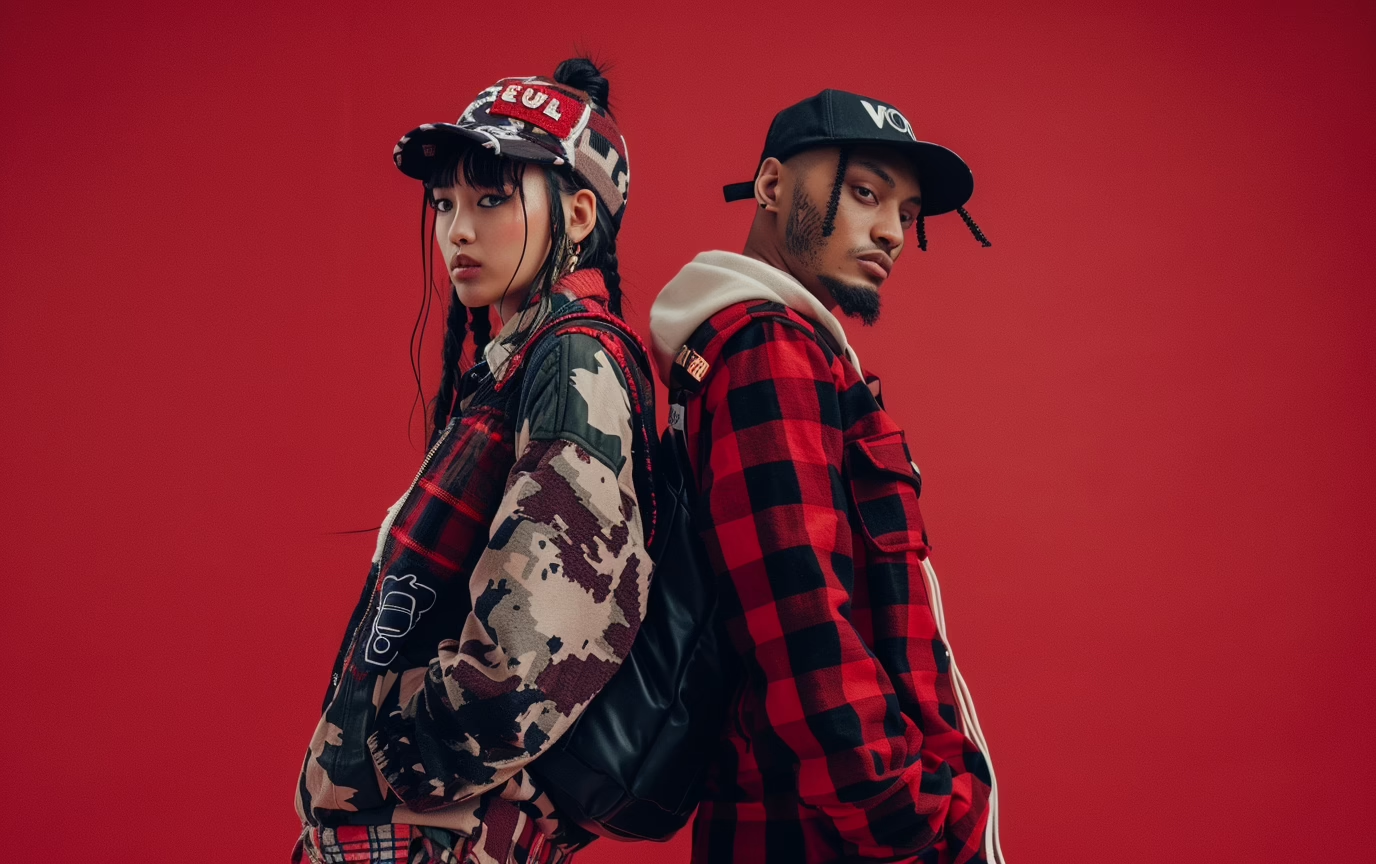
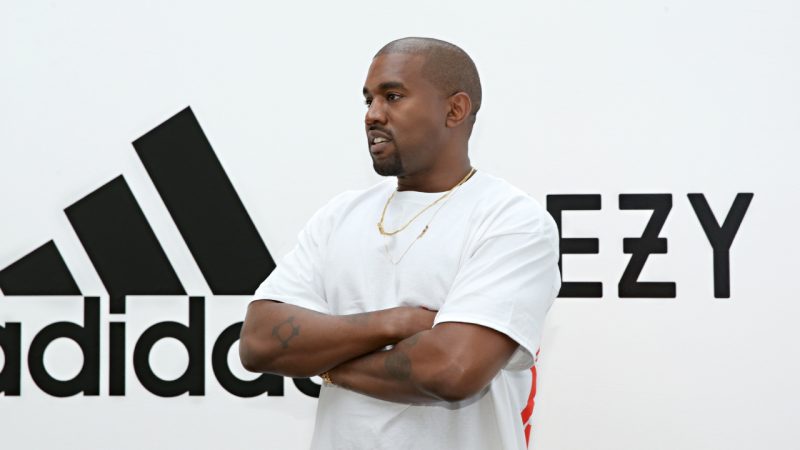


Leave a Reply